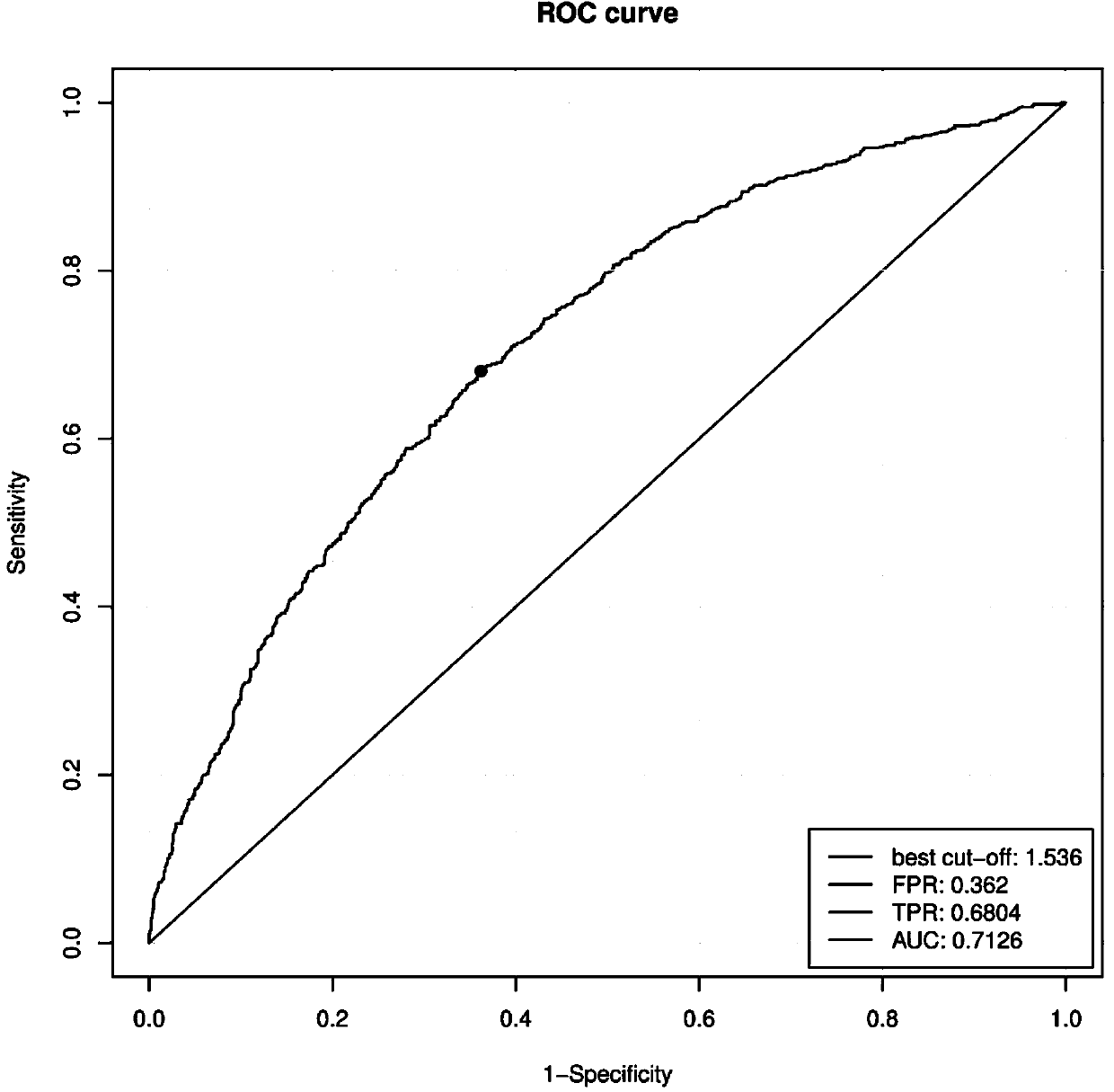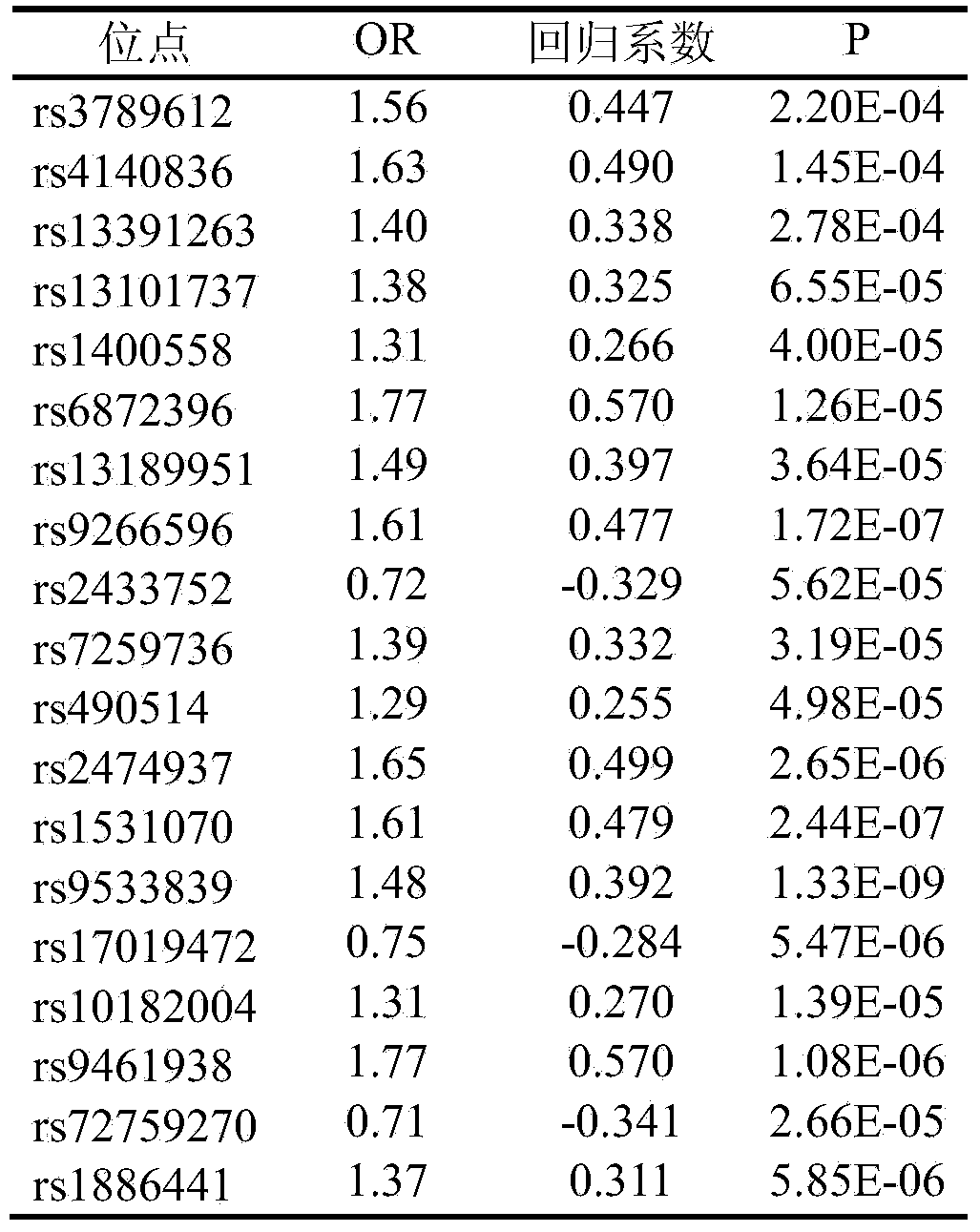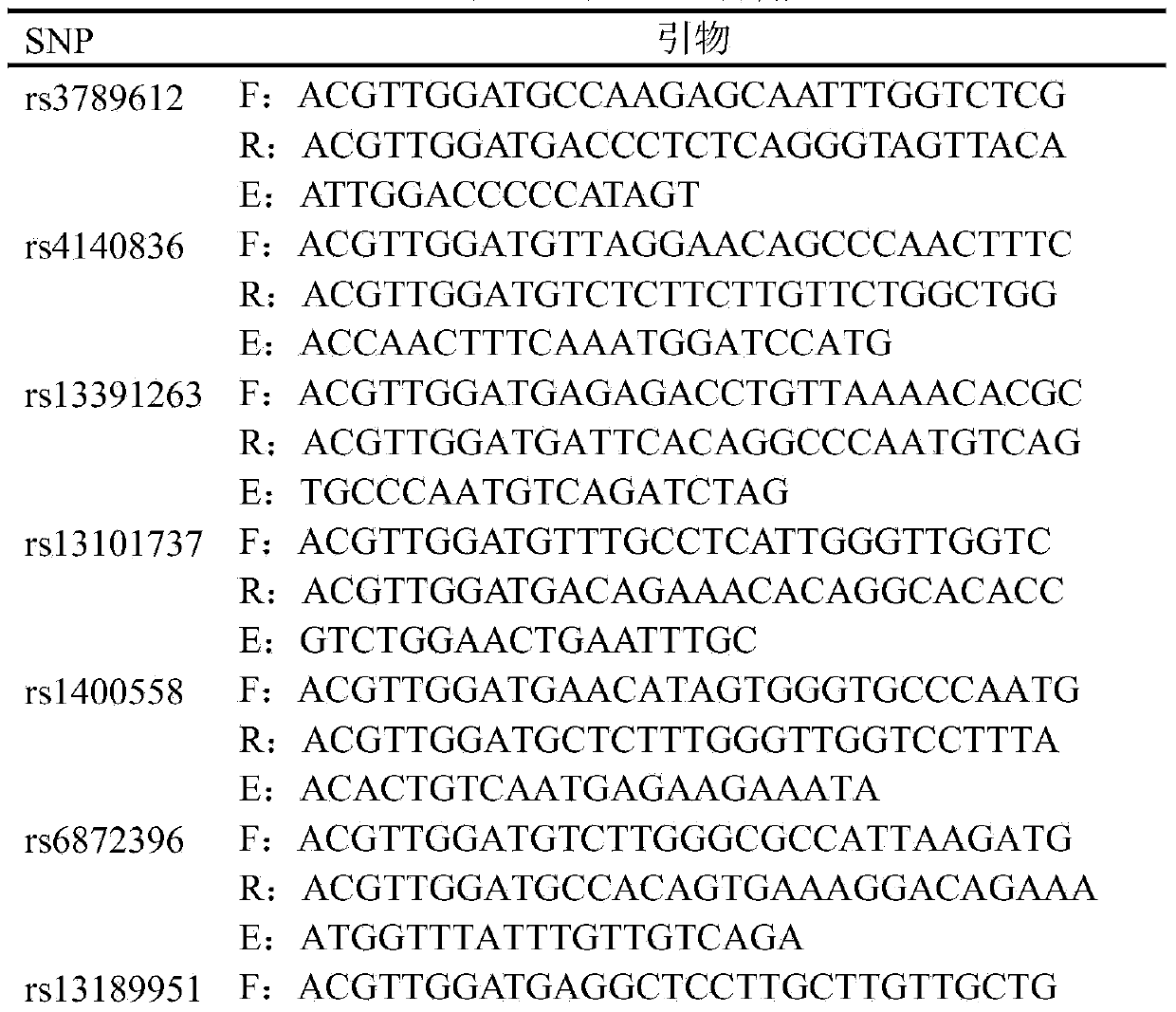SNP marker related to auxiliary diagnosis of non-syndromic congenital heart disease and application thereof
A congenital heart disease, auxiliary diagnosis technology, applied in the field of SNP markers
- Summary
- Abstract
- Description
- Claims
- Application Information
AI Technical Summary
Problems solved by technology
Method used
Image
Examples
Embodiment 1
[0143] The collection of embodiment 1 sample and the arrangement of sample data
[0144] The inventor collected a large number of blood samples from patients with non-syndromic congenital heart disease from the First Affiliated Hospital of Nanjing Medical University, Nanjing Children's Hospital, and Xi'an Xijing Hospital from 2006 to 2012. After sorting out the sample data, the inventor A total of 8217 samples were selected for genome-wide microarray scanning and experimental samples for single SNP Sequenom MassARRAY genotyping that met the following criteria:
[0145] 1. Patients with non-syndromic congenital heart disease diagnosed by echocardiography, cardiac catheterization or surgery;
[0146]2. Exclude patients with congenital abnormalities and chromosomal abnormalities in other organs;
[0147] 3. Exclude first-degree relatives with congenital heart disease, mothers with diabetes, phenylketonuria, mothers exposed to teratogens (such as pesticides or organic solvents) a...
Embodiment 2
[0150] Whole Genome Scanning of SNP in Example 2 Peripheral Blood DNA
[0151] Among the 945 non-syndromic congenital heart disease patients and 1246 healthy controls who met the above conditions, the two groups were matched in age and sex. The two groups of people were detected by Affymetrix6.0 chip to obtain relevant results. The specific steps are:
[0152] 1. Add hemolysis reagent (i.e. lysate, 40 parts) to the peripheral blood stored in the 2ml cryopreservation tube. Dilute the TrisHcl solution to 2000ml, the same below), turn it upside down and mix it completely.
[0153] 2. Removal of red blood cells: Fill the 5ml centrifuge tube to 4ml with hemolysis reagent, mix by inverting, centrifuge at 4000rpm for 10 minutes, and discard the supernatant. Add 4ml of hemolysis reagent to the precipitate, invert and wash again, centrifuge at 4000rpm for 10 minutes, and discard the supernatant.
[0154] 3. Extract DNA: Add 1ml of extract solution to the precipitate (each 300ml con...
Embodiment 3
[0161] Example 3 Sequeom MassARRAY genotyping of a single SNP
[0162] The SNPs found to be related to the onset of non-syndromic congenital heart disease by the above genome-wide scan were detected in 2160 cases of non-syndromic congenital heart disease and 3866 healthy controls. The specific steps are as follows:
[0163] 1. Add the hemolysis reagent to the peripheral blood stored in the 2ml cryopreservation tube, mix it upside down and transfer it completely.
[0164] 2. Removal of red blood cells: Fill the 5ml centrifuge tube to 4ml with hemolysis reagent, mix by inverting, centrifuge at 4000rpm for 10 minutes, and discard the supernatant. Add 4ml of hemolysis reagent to the precipitate, invert and wash again, centrifuge at 4000rpm for 10 minutes, and discard the supernatant.
[0165] 3. Extract DNA: Add 1ml of extract solution and 8μl of proteinase K to the precipitate, fully oscillate and mix on a shaker, and bathe overnight at 37°C.
[0166] 4. Remove protein: add 1ml...
PUM
| Property | Measurement | Unit |
|---|---|---|
| Sensitivity | aaaaa | aaaaa |
Abstract
Description
Claims
Application Information
 Login to View More
Login to View More - R&D
- Intellectual Property
- Life Sciences
- Materials
- Tech Scout
- Unparalleled Data Quality
- Higher Quality Content
- 60% Fewer Hallucinations
Browse by: Latest US Patents, China's latest patents, Technical Efficacy Thesaurus, Application Domain, Technology Topic, Popular Technical Reports.
© 2025 PatSnap. All rights reserved.Legal|Privacy policy|Modern Slavery Act Transparency Statement|Sitemap|About US| Contact US: help@patsnap.com



